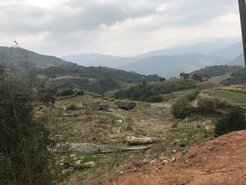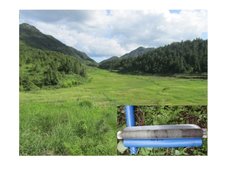The Impacts of Early Rice Agriculture on Tropical Forests in Southeastern Asia
A new study published in the Proceedings of National Academy of Sciences compiles ancient pollen records from a variety of settings in tropical southeastern Asia spanning the past 6,000 years
The results of a new study demonstrate that the rise of intensive rice agriculture not only led to extensive deforestation but also a remarkable reduction in arboreal diversity in tropical forests in southeastern Asia from 2,000 years ago.

The impacts of agriculture on tropical ecosystems in this part of the world are not purely a recent phenomena, however. Rice cultivation arrived in southern China and Southeast Asia around 4000 years ago, and the expansion of large-scale intensive rice agriculture in this area can be traced back to as early as 2500-2000 years ago. However, although intensive rice agriculture, particularly in paddy fields, has been linked to impacts on planetary systems, how it transformed tropical vegetation in the region in the past remains poorly understood.
In the new study, researchers from Sun Yat-Sen University, Beijing Normal University and the Max Planck Institute for the Science of Human History synthesize 14 ancient pollen records covering sites from the lowlands to the mountains in the coastal region of southeastern Asia. Their results show how forest cover and composition changed over the past 6,000 years, a period of major changes in rice agriculture.
The pollen records revealed widespread deforestation in the study area starting around 2,000 years ago, the same time archaeologists have documented extensive paddy rice agriculture developing across the region. The researchers also compiled a novel pollen dataset, which included approximately 150,000 identifications of pollen taxa, in order to see how rice agriculture influences ecosystem composition, as well as wider losses in forest.

“Fossil pollen data from sediment cores with reliable radiocarbon dating can provide continuous records of past vegetation change. It is widely used as a proxy for forest cover change,” notes Professor Zheng, lead author of the study. “Moreover, pollen assemblages contain valuable information on plant composition and diversity.”
The results demonstrated that agriculture-induced deforestation around 2,000 years ago in southeastern Asia also set off remarkable changes in the composition of the forests left standing. Overall, the team observed a reduction in arboreal diversity in northern tropical and subtropical forests. In particular, they showed that tropical forests, with the highest level of plant diversity and concentration of endemic species, probably suffered a greater decline in arboreal richness than forests in subtropical and temperate areas.
The study was also able to pinpoint past human impacts on a living fossil of the tropical forest: Glyptostrobus sp. Also known as Chinese swamp cypress, Glyptostrobus is an endemic wetland conifer tree in southeastern Asia that, prior to the arrival of humans, managed to persist in the region through millions of years of climatic and tectonic upheaval prior. By undertaking novel microscopic methods to identify this tree in ancient records, the researchers also demonstrated that its decline began 1-2,,000 years ago, as paddy field farming resulted in the loss of its natural habitats and set it on a path towards its current precarity.
The use of diverse methods to study past ecologies can provide insights into the ways past human societies altered past landscapes in the tropics, with potential implications for understanding remnant vegetation and habitat distributions in the 21st century. Only by acknowledging these deep time interactions between humans and the tropics, the researchers argue, can more successful conservation strategies be developed for some of the most critical, but highly threatened, ecosystems on the planet.

